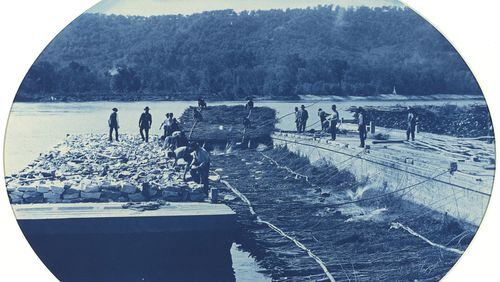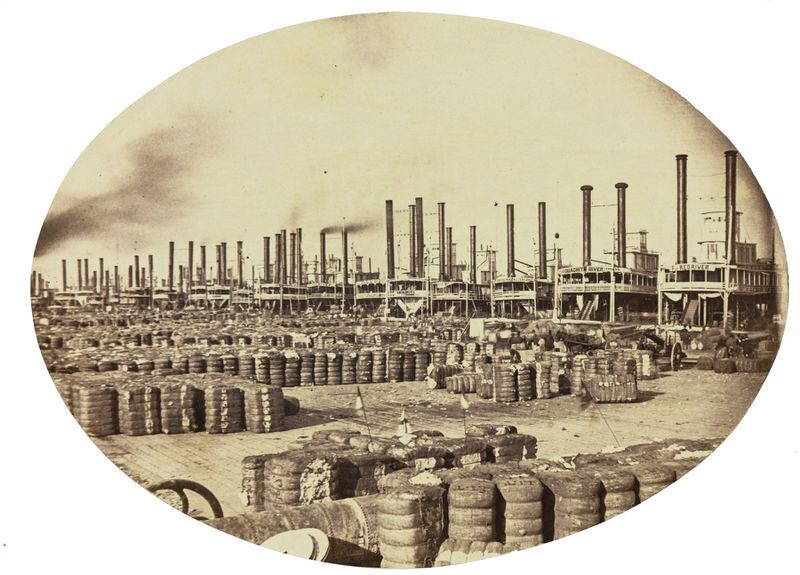NEW ORLEANS (AP) — Some of the oldest daguerreotypes and photographs of U.S. landscapes are about to go on display in New Orleans, as part of the first exhibit and study of such landscapes made east of the Mississippi River.
Photographs of vast, unspoiled Western vistas are well known, many of them from federal land surveys after the Civil War. Photography had had a while to develop by then — "people could take cameras with them into the West," said Russell Lord, curator of photography at the New Orleans Museum of Art.
But, he said, "In many ways, when photography comes to the East, people have reshaped the land, and people photograph that process." And, by the end of the century, photographers were taking note of industry's devastation and pushing for preservation of what wilderness remained.
"East of the Mississippi: Nineteenth-Century American Landscape Photography," which debuted with four months at the National Gallery of Art in Washington, will run Oct. 6-Jan. 7 at the New Orleans Museum of Art — its only other stop. About 62,000 people saw it in Washington.
"Some of the oldest known photographs in this country are in this exhibit, and many are being shown for the first time ever — and probably the only time in our lives, because the material is fragile and light-sensitive," said Lord, who worked on the exhibit with creator Diane Waggoner, curator of 19th century photography at the National Gallery.
The oldest include an 1839 daguerreotype of Newburyport, Massachusetts, by Boston-area physician Henry Coit Perkins, and — lent by the library of Newcastle University in England — two shots of Niagara Falls taken in 1840 by English scientist Hugh Lee Pattinson.
France had made Louis Daguerre's process of fixing images on polished silver a gift to the world in August 1839 and articles about it arrived in this country that September. U.S. scientists and others began experimenting almost immediately, Waggoner wrote in the exhibit's 270-page catalog.
Experiments with paper-based photography had actually reached the U.S. a few months earlier than daguerreotype, starting with salt prints, but it wasn't until the 1850s that newer paper processes took over the field.
Credit: Jay Dearborn Edwards
Credit: Jay Dearborn Edwards
The earliest landscapes appear to be essentially whatever was in the experimenters' neighborhood. Waggoner said she expected to find mostly scenic views, like those of Niagara and the White and Adirondack mountains — the sort of pictures painted by landscape artists of the time.
She did find such photographs. "But at the same time, what photographers were so interested in was the way the land and landscape were being developed — industrialization, mining, the railroads," she said.
"There was a market among the general public for these images, both the beautiful, pristine landscape and also the way the landscape was harnessed and used," Waggoner said.
In the West, photography played a big part in getting Yosemite set aside as a California park in 1864 and making Yellowstone the first national park in 1872, both before development could set in. But in the East, preservation often was reclamation. This may be most explicit in a picture taken for an 1880 New York State survey for preservation of Niagara Falls scenery: the photo's title is "Disfigured Banks, Repulsive Scenery Around Visitor Approaching Goat Island Bridge for First View of Rapids."
Waggoner said the exhibit is the first look at Eastern photographic landscapes as a whole.
"All the attention and scholarship in 19th century American photography has generally been focused on photographers who went West. My goal was to bring back into the light a number of photographers whose work had been mostly overshadowed by the western material and mostly predates it," she said.
Some of the pictures to be shown in New Orleans weren't even shown in Washington.
"A number ... are so fragile that lenders only agreed to lend to one of the two venues," Lord said.
He said those being shown only in New Orleans include an 1845 daguerreotype of the Connecticut River Valley on which photographer Thomas Easterly inscribed two lines of pastoral poetry, and a photograph of the St. Charles Hotel in New Orleans by Theodore Lilienthal — part of a portfolio sent by the City of New Orleans as a gift to Napoleon III during the 1867 world's fair in Paris.
About the Author







